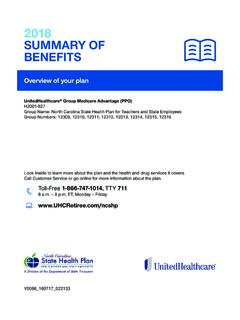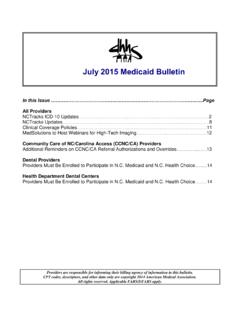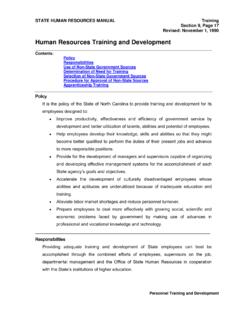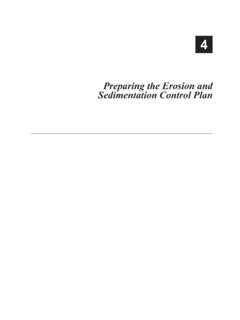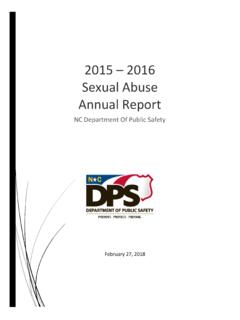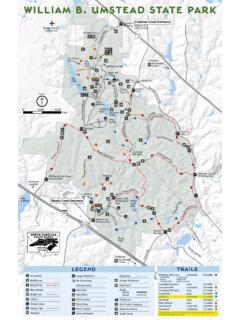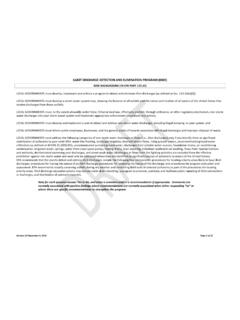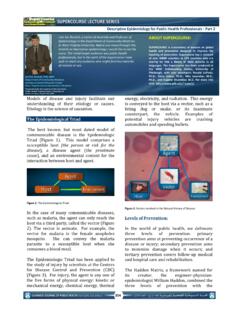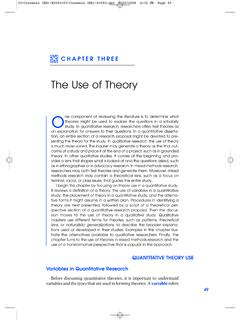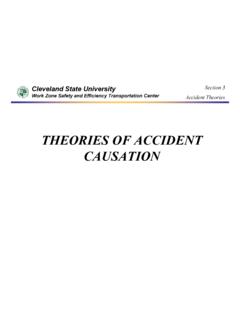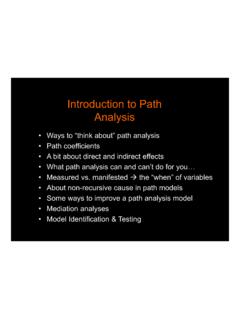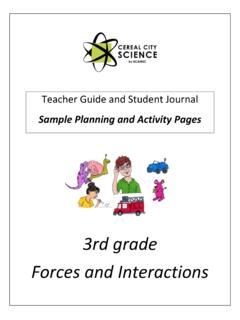Transcription of North Carolina Math 1 North Carolina Standard Course ... - NC
1 North Carolina math 1 1 North Carolina Standard Course of Study North Carolina math 1 Standards for Mathematical Practice 1. Make sense of problems and persevere in solving them. 2. Reason abstractly and quantitatively. 3. Construct viable arguments and critique the reasoning of others. 4. model with mathematics. 5. Use appropriate tools strategically. 6. Attend to precision. 7. Look for and make use of structure. 8. Look for and express regularity in repeated reasoning. Number and Quantity The Real Number System Extend the properties of exponents to rational exponents. Rewrite algebraic expressions with integer exponents using the properties of exponents. Algebra Seeing Structure in Expressions Interpret the structure of expressions.
2 Interpret expressions that represent a quantity in terms of its context. a. Identify and interpret parts of a linear, exponential, or quadratic expression, including terms, factors, coefficients, and exponents. b. Interpret a linear, exponential, or quadratic expression made of multiple parts as a combination of entities to give meaning to an expression. Seeing Structure in Expressions Write expressions in equivalent forms to solve problems. Write an equivalent form of a quadratic expression 2+ + , where a is an integer, by factoring to reveal the solutions of the equation or the zeros of the function the expression defines. North Carolina math 1 2 Arithmetic with Polynomial Expressions Perform arithmetic operations on polynomials.
3 Build an understanding that operations with polynomials are comparable to operations with integers by adding and subtracting quadratic expressions and by adding, subtracting, and multiplying linear expressions. Arithmetic with Polynomial Expressions Understand the relationship between zeros and factors of polynomials. Understand the relationships among the factors of a quadratic expression, the solutions of a quadratic equation, and the zeros of a quadratic function. Creating Equations Create equations that describe numbers or relationships. Create equations and inequalities in one variable that represent linear, exponential, and quadratic relationships and use them to solve problems. Create and graph equations in two variables to represent linear, exponential, and quadratic relationships between quantities.
4 Create systems of linear equations and inequalities to model situations in context. Solve for a quantity of interest in formulas used in science and mathematics using the same reasoning as in solving equations. Reasoning with Equations and Inequalities Understand solving equations as a process of reasoning and explain the reasoning. Justify a chosen solution method and each step of the solving process for linear and quadratic equations using mathematical reasoning. North Carolina math 1 3 Reasoning with Equations and Inequalities Solve equations and inequalities in one variable. Solve linear equations and inequalities in one variable. Solve for the real solutions of quadratic equations in one variable by taking square roots and factoring.
5 Reasoning with Equations and Inequalities Solve systems of equations. Explain why replacing one equation in a system of linear equations by the sum of that equation and a multiple of the other produces a system with the same solutions. Use tables, graphs, or algebraic methods (substitution and elimination) to find approximate or exact solutions to systems of linear equations and interpret solutions in terms of a context. Reasoning with Equations and Inequalities Represent and solve equations and inequalities graphically Understand that the graph of a two variable equation represents the set of all solutions to the equation. Build an understanding of why the x-coordinates of the points where the graphs of two linear, exponential, and/or quadratic equations = ( ) and = ( ) intersect are the solutions of the equation ( )= ( ) and approximate solutions using graphing technology or successive approximations with a table of values.
6 Represent the solutions of a linear inequality or a system of linear inequalities graphically as a region of the plane. North Carolina math 1 4 Functions Interpreting Functions Understand the concept of a function and use function notation. Build an understanding that a function from one set (called the domain) to another set (called the range) assigns to each element of the domain exactly one element of the range by recognizing that: if f is a function and x is an element of its domain, then ( ) denotes the output of f corresponding to the input x. the graph of is the graph of the equation = ( ). Use function notation to evaluate linear, quadratic, and exponential functions for inputs in their domains, and interpret statements that use function notation in terms of a context.
7 Recognize that recursively and explicitly defined sequences are functions whose domain is a subset of the integers, the terms of an arithmetic sequence are a subset of the range of a linear function, and the terms of a geometric sequence are a subset of the range of an exponential function. Interpreting Functions Interpret functions that arise in applications in terms of the context. Interpret key features of graphs, tables, and verbal descriptions in context to describe functions that arise in applications relating two quantities, including: intercepts; intervals where the function is increasing, decreasing, positive, or negative; and maximums and minimums. Interpret a function in terms of the context by relating its domain and range to its graph and, where applicable, to the quantitative relationship it describes.
8 Calculate and interpret the average rate of change over a specified interval for a function presented numerically, graphically, and/or symbolically. North Carolina math 1 5 Interpreting Functions Analyze functions using different representations. Analyze linear, exponential, and quadratic functions by generating different representations, by hand in simple cases and using technology for more complicated cases, to show key features, including: domain and range; rate of change; intercepts; intervals where the function is increasing, decreasing, positive, or negative; maximums and minimums; and end behavior. Use equivalent expressions to reveal and explain different properties of a function.
9 A. Rewrite a quadratic function to reveal and explain different key features of the function b. Interpret and explain growth and decay rates for an exponential function. Compare key features of two functions (linear, quadratic, or exponential) each with a different representation (symbolically, graphically, numerically in tables, or by verbal descriptions). Building Functions Build a function that models a relationship between two quantities. Write a function that describes a relationship between two quantities. a. Build linear and exponential functions, including arithmetic and geometric sequences, given a graph, a description of a relationship, or two ordered pairs (include reading these from a table).
10 B. Build a function that models a relationship between two quantities by combining linear, exponential, or quadratic functions with addition and subtraction or two linear functions with multiplication. Translate between explicit and recursive forms of arithmetic and geometric sequences and use both to model situations. Linear, Quadratic, and Exponential Models Construct and compare linear and exponential models and solve problems. Identify situations that can be modeled with linear and exponential functions, and justify the most appropriate model for a situation based on the rate of change over equal intervals. Compare the end behavior of linear, exponential, and quadratic functions using graphs and tables to show that a quantity increasing exponentially eventually exceeds a quantity increasing linearly or quadratically.
